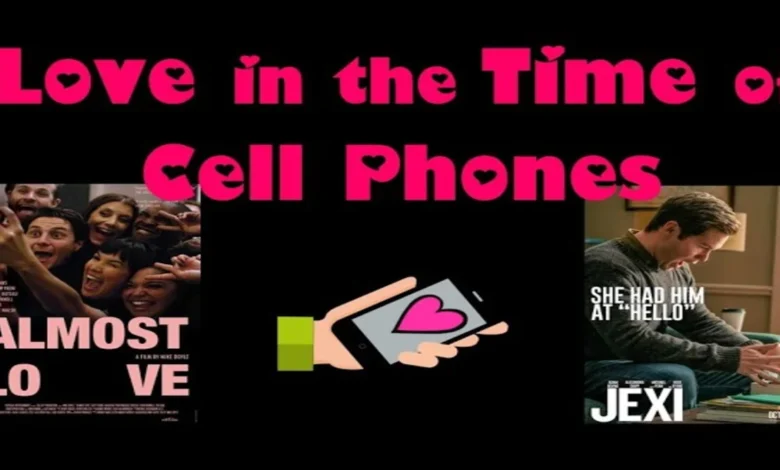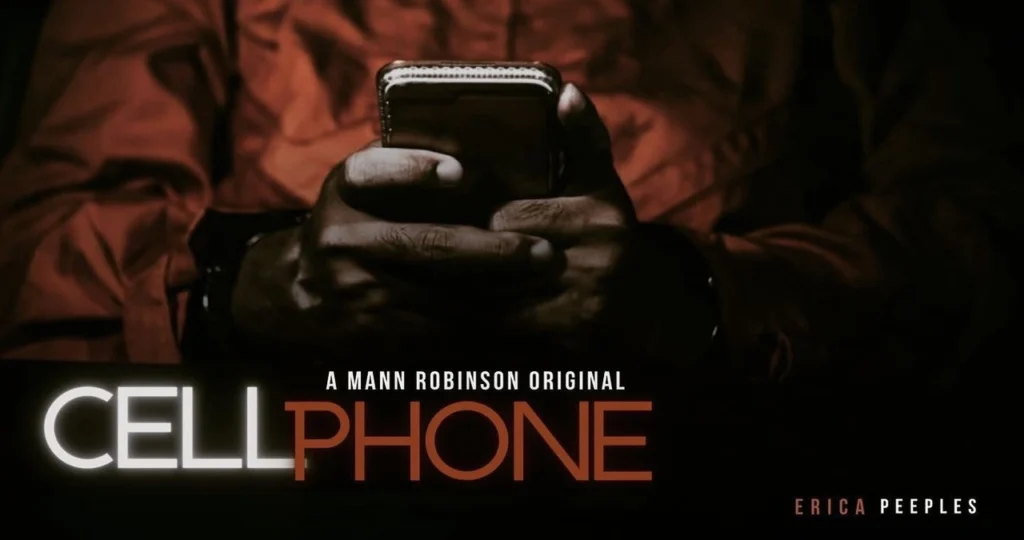The Evolution of Cellphone Movies: 1A New Era of Filmmaking

Cellphone Movies Cell phones have revolutionized nearly every aspect of our lives. From how we communicate to how we shop, work, and socialize, these compact devices have made an undeniable mark on the world. However, one of the most surprising and groundbreaking changes has been in the world of filmmaking. The concept of “cellphone movies” is no longer just a novelty; it has become a serious, legitimate form of cinema. In this article, we’ll explore the rise of cellphone movies, their impact on the film industry, and how they reshape how films are made and consumed.
What is a Cellphone Movie?
A cellphone movie, in its simplest definition, refers to a film that is shot entirely using a mobile phone, typically one with a high-quality camera. The idea of shooting a movie on a phone might sound unconventional, but with the advances in smartphone camera technology, it has become more than just a gimmick. Phones now come equipped with cameras capable of shooting in 4K resolution, offering filmmakers an affordable and portable option for creating professional-looking films.
In the past, making a movie required expensive equipment and significant resources. Today, however, anyone with a smartphone has the potential to create a feature-length film. The quality of the content, the creativity of the filmmaker, and the right storytelling techniques are now the only real limits to what can be achieved.
Filmmakers such as Sean Baker, known for his film Tangerine, which was shot entirely on an iPhone, have pushed the boundaries of this new era of filmmaking. The film received critical acclaim and was a breakthrough in the world of cellphone movies, showing that great films can be made on a mobile phone.

The Rise of Cellphone Movies in Modern Cinema
The rise of cellphone movies can be attributed to several factors, with one of the primary reasons being the accessibility of smartphones. Everyone today owns a phone with a high-quality camera, making filmmaking more accessible than ever before. You no longer need to rely on expensive film stock, large cameras, or professional equipment to make a movie. A smartphone, a bit of creativity, and some editing skills can take you a long way.
The democratization of filmmaking has allowed many independent filmmakers to create content without the financial barriers that have traditionally limited access to the film industry. Some argue that the advent of cellphone movies has leveled the playing field, allowing underrepresented voices to tell their stories in a way that wasn’t possible before. Whether it’s a short film, a documentary, or a full-length feature, a cellphone movie can be just as powerful, engaging, and impactful as a film made with traditional equipment.
In addition to making filmmaking accessible, the quality of mobile phones has greatly improved over the years. Modern smartphones are now equipped with impressive camera technology, with many offering features like 4K video recording, advanced stabilization, and high-definition lenses. These innovations have made it possible for filmmakers to shoot breathtaking visuals with a device that fits in the palm of their hand. This rise in quality, paired with the increasing number of apps and tools available for editing, has transformed cellphone movies into a serious filmmaking medium.
Key Advantages of Shooting Movies on Cellphones
There are several advantages to shooting a movie with a cellphone. The most obvious one is convenience. With a phone in your pocket, you can shoot anywhere, anytime. You don’t need to lug around heavy camera equipment, which can be both cumbersome and expensive. This makes it easier to capture spontaneous moments and be creative with your shots. Moreover, smartphones are more than just cameras—they are complete filmmaking devices, offering apps for editing, sound recording, and even special effects.
Another significant advantage of shooting a movie on a cellphone is the cost. Traditional filmmaking equipment, including cameras, lenses, and lighting rigs, can be incredibly expensive. In contrast, smartphones are relatively affordable and already include all the necessary components to start shooting. This cost-effectiveness is a game-changer, especially for independent filmmakers who may not have the financial resources to rent high-end equipment.
Cellphone movies also allow for a more intimate and organic style of filmmaking. Since smartphones are smaller and more portable than traditional cameras, they allow filmmakers to get closer to the action and capture more raw, authentic moments. This can be especially beneficial for documentaries or personal stories where capturing genuine emotions and interactions is key. The compactness of a phone allows filmmakers to shoot in tight spaces or move around unnoticed, which can add a unique dynamic to the film.
Famous Cellphone Movies and Their Impact
The success of cellphone movies has been made evident by several films that have gained both critical and commercial success. One of the most notable films in this genre is Tangerine (2015), directed by Sean Baker. The film was shot entirely on an iPhone 5S and gained international attention for its vibrant portrayal of transgender sex workers in Los Angeles. The movie was a breakthrough moment for cellphone filmmaking, showing that a small, affordable device could produce a film that looked and felt like a Hollywood production.
Tangerine wasn’t just a success because of its innovative approach to filming—it also made waves for its compelling story and its focus on marginalized communities. This demonstrated that cellphone movies could do more than just showcase technical innovation—they could also be a platform for important social commentary and storytelling. The film’s success proved that you don’t need a big budget to tell a meaningful, impactful story.
Another well-known example is Unsane (2018), directed by Steven Soderbergh. The entire film was shot on an iPhone 7 Plus, and despite its unconventional shooting style, it received positive reviews for its tense atmosphere and psychological depth. Soderbergh, a well-established filmmaker, proved that even established directors could experiment with cellphone filmmaking and achieve a successful outcome.
These films are just the tip of the iceberg, as more and more filmmakers are exploring the potential of shooting on smartphones. From indie filmmakers to Hollywood veterans, the medium of cellphone filmmaking is being embraced by a diverse range of creators.
How Cellphones are Changing the Filmmaking Process
Cellphone movies have altered the way films are made in several significant ways. The most obvious change is the accessibility and affordability of filmmaking. Before smartphones, aspiring filmmakers would need to invest in expensive cameras, equipment, and studio time. Now, a filmmaker can simply pull out their phone and start shooting without the need for large budgets or elaborate setups.
This has allowed for a more spontaneous approach to filmmaking. Gone are the days of waiting for the perfect lighting or having to plan for weeks to get the perfect shot. With a smartphone in hand, filmmakers can shoot at any time, in any place. This flexibility has led to a surge in creativity, as filmmakers are no longer bound by the traditional constraints of large-scale productions.
Furthermore, cellphone filmmaking has shifted the way that films are edited and processed. Apps like iMovie, LumaFusion, and Adobe Premiere Rush have made it possible for filmmakers to edit their footage on the go. This has dramatically sped up the post-production process, enabling filmmakers to finish their films quickly and efficiently. The convenience of mobile editing tools has made it easier for independent filmmakers to bring their projects to life without having to rely on expensive software or professional editing suites.
The Future of Cellphone Movies
As smartphone technology continues to advance, the future of cellphone movies looks incredibly bright. Companies are constantly pushing the boundaries of what their phones can do, with innovations like improved camera sensors, faster processors, and better stabilization systems. These advancements will likely continue to make cellphone filmmaking more powerful and accessible, opening up even more creative possibilities for filmmakers.
One exciting development on the horizon is the rise of virtual reality (VR) and augmented reality (AR) filmmaking. Many smartphones are now equipped with advanced VR and AR capabilities, and filmmakers are beginning to experiment with these technologies. It’s possible that the future of cellphone movies could include interactive and immersive experiences, offering audiences a new way to engage with stories.
Moreover, the rise of streaming platforms has further accelerated the growth of cellphone movies. With platforms like YouTube, Vimeo, and even Netflix embracing mobile content, filmmakers now have more opportunities than ever to showcase their work to global audiences. The ability to upload and share content directly from a smartphone has made it easier for filmmakers to reach millions of viewers, bypassing the traditional gatekeepers of the film industry.
Conclusion: The Cellphone Movie Revolution
The world of filmmaking has undergone a dramatic transformation in recent years, with cellphone movies emerging as a legitimate and exciting genre. What once seemed like an experiment has now become a vital part of the film industry, allowing filmmakers to create high-quality, impactful films with little more than a smartphone. Whether it’s due to the accessibility, affordability, or creative potential of the medium, cellphone movies have captured the imagination of filmmakers and audiences alike.
As technology continues to evolve, we can only imagine what the future holds for cellphone movies. With smartphones becoming even more powerful, and new